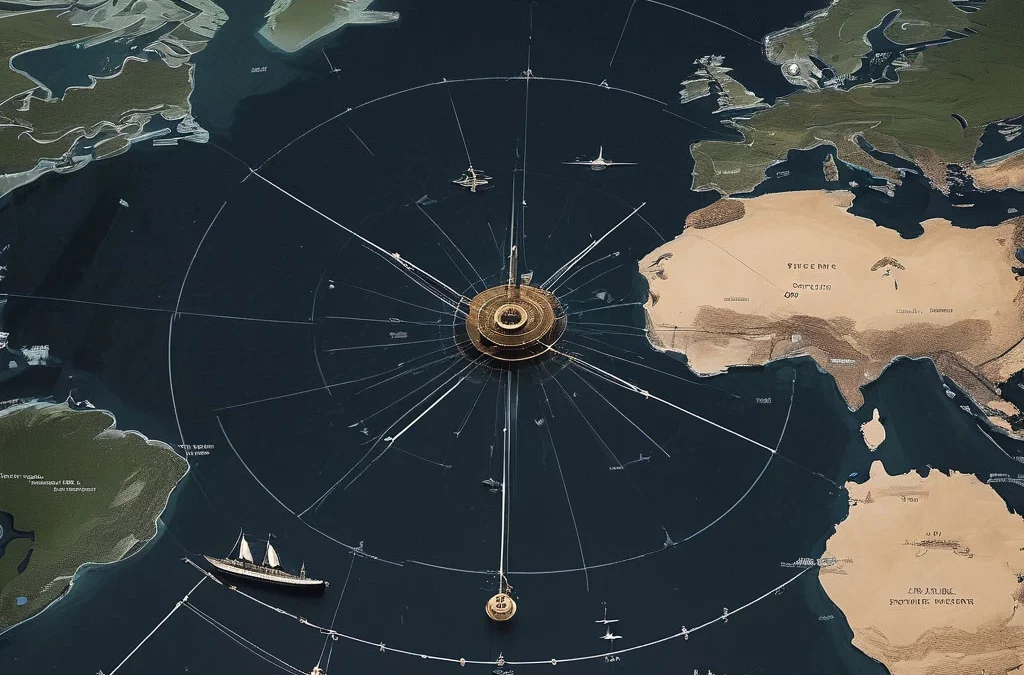

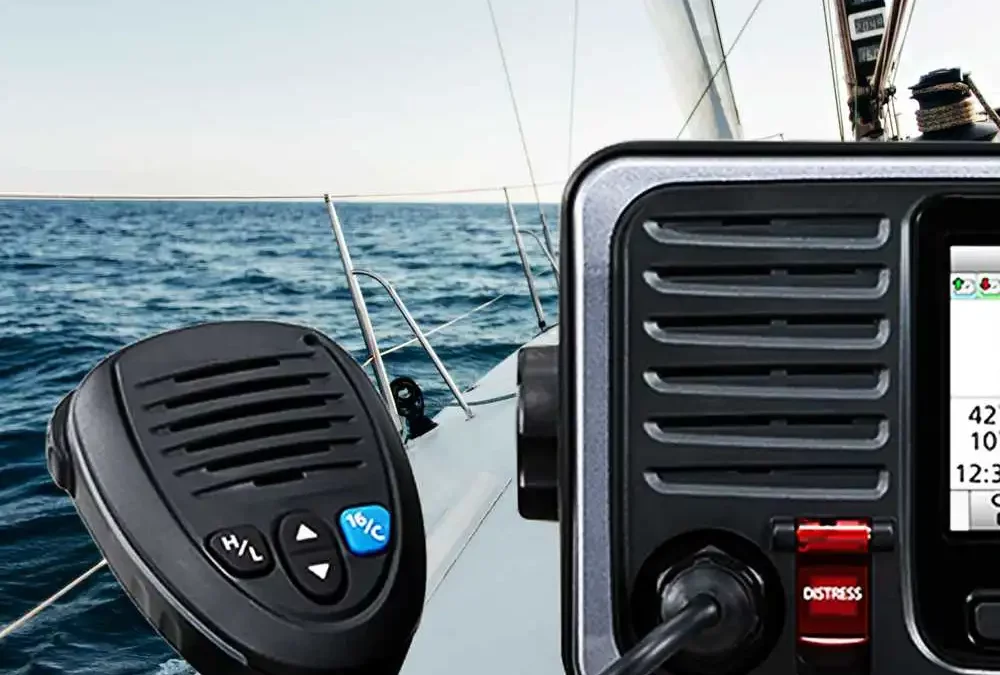
How to Choose the Right Marine VHF Radio for Your Commercial Fishing Vessel
The vast expanse of the open sea holds both beauty and challenges, making safety a top priority for every sailor and fisherman. In this maritime world, communication is not just a convenience but a lifeline. This blog post dives into the depths of the importance of Marine VHF Radios, especially for commercial fishing vessels. Let’s explore the key considerations, features, and the crucial role they play in ensuring a safe and efficient voyage.Importance of Marine VHF Radios
Marine VHF Radios stand as the cornerstone of communication at sea. In the realm of maritime safety, they serve as the primary means of communication between vessels, harbor authorities, and emergency services. Unlike other communication tools, VHF radios operate on a specific frequency range, ensuring clear and reliable communication even in challenging marine conditions. For commercial fishing vessels, these radios are indispensable. They provide a direct line of communication to coordinate activities, share vital information about weather conditions, and, most importantly, seek assistance in case of emergencies. Investing in a reliable VHF marine radio for sale is not just a purchase; it’s an investment in the safety and efficiency of your maritime operations.Considerations for Commercial Fishing Vessels
Commercial fishing vessels operate in dynamic environments with constantly changing conditions. When choosing a VHF marine radio, it’s essential to consider the specific needs of these vessels. Look for radios designed to withstand the harsh marine environment, with features like water resistance, durability, and corrosion resistance. Additionally, consider the size of your vessel and the range of communication required. Larger vessels may need radios with higher power output and longer antenna options to ensure communication coverage over greater distances.Range and Power Requirements
Effective communication at sea relies heavily on the range and power capabilities of your marine VHF radio. For commercial fishing vessels, where distances can be substantial, opting for radios with higher power output is crucial. This ensures that your vessel can communicate reliably, even when out of sight from the shore or other vessels. Carefully assess the range specifications of the VHF radios you’re considering. Look for options that provide ample coverage for your operational needs, factoring in potential obstacles like waves, weather conditions, and other vessels in the vicinity.DSC Capability and Safety Features
Digital Selective Calling (DSC) capability is a game-changer in marine communication. It allows for the automatic transmission of distress signals in emergency situations, streamlining the process of seeking assistance. When exploring VHF marine radios for sale, prioritize models equipped with DSC capability for an added layer of safety. Furthermore, consider additional safety features such as built-in GPS capabilities, which enable automatic position reporting during distress calls. These features can significantly enhance the efficiency of search and rescue operations, potentially saving lives in critical situations.Installation and Mounting Options
The installation of your marine VHF radio is as crucial as its features. Opt for radios that offer flexible mounting options to suit the layout of your vessel. Consider factors like available space, visibility, and ease of access when choosing a mounting location. Ensure that the installation process aligns with your vessel’s specifications, and if needed, seek professional assistance to guarantee a secure and functional setup. Proper installation enhances the longevity and performance of your VHF radio, contributing to the overall safety of your vessel.User-Friendly Features and Interface
In the midst of challenging conditions, simplicity is key. Look for marine VHF radios that boast user-friendly interfaces, intuitive controls, and clear displays. When every second counts, an easy-to-navigate interface ensures swift and accurate communication. Consider features such as programmable channels, instant channel access, and one-touch emergency functions. These elements contribute to the overall user experience and can make a significant difference in critical situations.Making an Informed Decision
In the world of commercial fishing, where every voyage is a delicate dance with the elements, the right marine VHF radio can make all the difference. Prioritize safety, reliability, and ease of use when exploring options for marine VHF radios for sale. Investing in a high-quality VHF marine radio is an investment in the well-being of your crew, the security of your vessel, and the success of your operations. By considering factors such as range, power, safety features, installation, and user interface, you can make an informed decision that ensures seamless communication and enhances the overall safety of your maritime endeavors. When the waves get challenging, let your communication be the steady anchor that guides you safely back to shore.High-Quality Marine VHF in Singapore at Tecomart
know how essential marine VHF radios are in marine communication and safety. As a leading name in radio communication equipment suppliers in Singapore, Tecomart offers a diverse range of marine VHF radios and accessories. We have fixed-mount marine VHF devices from reputable transmitting and receiving equipment manufacturers, such as Shakespeare Marine, ICOM, and JRC. With this, we strive to empower you to maximise your communication range and enjoy your maritime journeys to the fullest. Whether you’re looking for a reliable VHF marine radio for sale or VHF antennas, Tecomart is your trusted partner. Our commitment to providing quality equipment and customer satisfaction ensures you have everything you need to explore the seas safely and confidently. Browse through our catalogue to find quality marine navigation and communication equipment for your next sea voyage today.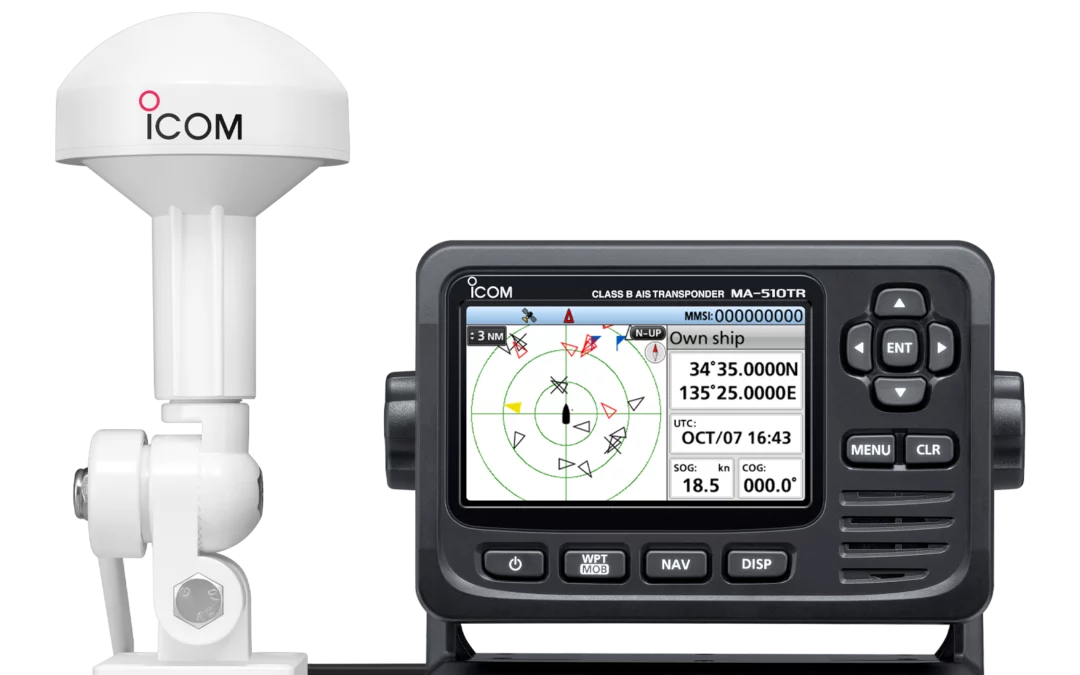
Understanding AIS Automatic Identification System for Commercial Marine Operations
Navigating the Seas with AIS Technology
In the complex world of maritime operations, staying informed about the movement of vessels is crucial for safety and efficiency. Automatic Identification System (AIS) technology has emerged as a cornerstone in achieving this objective. In this blog post, we’ll delve into the workings of AIS, explore its benefits, understand regulations and compliance, discuss challenges, and highlight its integration with other technologies. Whether you’re a ship operator, maritime professional, or simply curious about the advancements shaping the seas, this exploration of AIS promises valuable insights.
What is AIS? Unveiling the Basics
AIS, or Automatic Identification System, is a technology designed to enhance situational awareness by providing real-time information about the identity, position, course, and speed of vessels in the vicinity. Originally developed as a collision avoidance tool, AIS has evolved into a comprehensive system that aids navigation, traffic management, and maritime domain awareness.
How AIS Works: The Dance of Data Transmission
At its core, AIS relies on VHF radio frequencies for data transmission between vessels and shore-based stations. Equipped with AIS transponders, vessels continuously broadcast information, creating a network where nearby ships can receive and interpret the data. The exchanged information includes vessel identification, position, heading, speed, and navigational status. This real-time data exchange allows vessels to track each other, mitigating the risk of collisions and facilitating efficient navigation.
Benefits of AIS in Marine Operations: A Technological Lifesaver
The incorporation of AIS in marine operations brings a multitude of benefits. One of its primary advantages is enhanced safety through improved collision avoidance. The ability to track vessel movements in real-time aids in traffic management, especially in busy waterways. Additionally, AIS contributes to search and rescue efforts by providing accurate information about distressed vessels. The efficiency gains in route planning and navigation further bolster the case for AIS adoption in the maritime industry.
Regulations and Compliance: Navigating the Legal Framework
The International Maritime Organization (IMO) mandates the use of AIS for certain vessels to ensure safe and secure maritime traffic. Class A AIS transponders are required for larger vessels, while Class B AIS transponders are recommended for smaller vessels. Compliance with these regulations is not only a legal requirement but also a fundamental step toward harmonizing maritime communication and ensuring the effectiveness of AIS technology.
Challenges and Limitations: Navigating the Boundaries
While AIS is a powerful tool, it is not without challenges. Signal range limitations, susceptibility to signal interference, and potential for cyber threats are among the concerns. Additionally, some vessels may not be equipped with AIS transponders, limiting the system’s effectiveness in comprehensive vessel tracking. Recognizing these challenges is essential for ongoing improvements and advancements in AIS technology.
Integration with Other Technologies: A Symbiotic Relationship
AIS doesn’t operate in isolation; it thrives when integrated with other maritime technologies. The fusion of AIS with radar, Electronic Chart Display and Information Systems (ECDIS), and satellite communication amplifies its effectiveness. This integration creates a comprehensive navigational toolkit, providing seafarers with a holistic view of their surroundings and ensuring optimal safety in various maritime scenarios.
Importance of AIS in the Maritime Industry
As the maritime industry advances, AIS stands out as a technological linchpin that enhances safety, efficiency, and navigational awareness. To explore a range of AIS transponders and related equipment, visit www.tecomart.co. From collision avoidance to search and rescue support, AIS has proven its worth in diverse maritime applications. As vessels continue to traverse our oceans, the importance of AIS technology in ensuring secure and seamless maritime operations cannot be overstated. It is, indeed, a beacon guiding the industry toward safer and more technologically advanced waters.
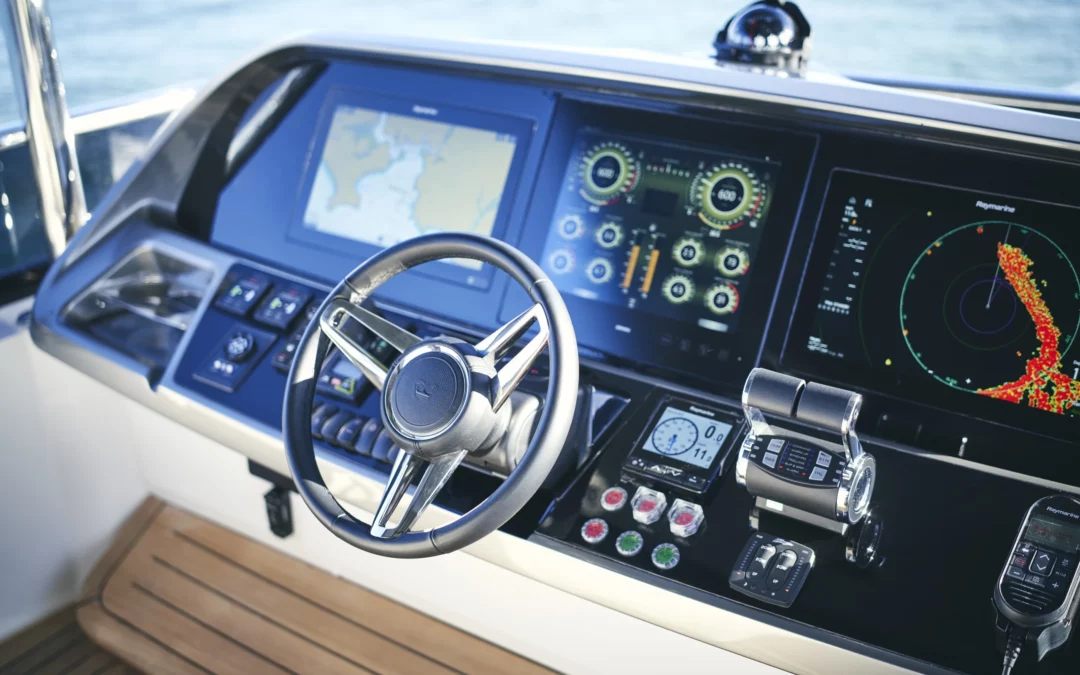
A Guide to Commercial Marine Radio Installation and Wiring
Importance of Marine Radio Communication
In the expansive world of maritime operations, effective communication is paramount for the safety and efficiency of commercial vessels. Marine radios serve as the backbone of this communication network, facilitating vital exchanges between vessels, ports, and authorities. This guide navigates through the intricacies of commercial marine radio installation and wiring, ensuring a seamless and reliable communication system at sea.
Types of Marine Radios Available
VHF Marine Radios
VHF (Very High Frequency) marine radios are the backbone of maritime communication. Known for their clear line-of-sight communication and dedicated frequency bands, VHF radios are a standard choice for commercial vessels.HF and MF Radios
For long-range communication, especially in open waters, High-Frequency (HF) and Medium-Frequency (MF) radios are employed. These radios provide extended coverage but require more complex installation and equipment.Digital Mobile Radios (DMR)
Digital Mobile Radios (DMR) offer advanced features such as encryption and efficient use of bandwidth. Their digital nature enhances communication clarity and data transmission.Planning the Installation Process
Location and Mounting
Careful consideration should be given to the placement of marine radios. Mount them in a centralized location with minimal interference from other electronic equipment, ensuring easy access for the crew.Power Supply
Ensure a stable and reliable power source for the marine radio installation. Use marine-grade wiring and connectors to prevent corrosion and electrical issues.Wiring Considerations and Best Practices
Marine-Grade Wiring
Marine environments are harsh, with exposure to saltwater and weather elements. Use marine-grade wiring to prevent corrosion and ensure the longevity of the installation.Cable Routing
Plan the cable routing to avoid interference with other electronic equipment. Keep cables away from high-temperature zones and secure them to prevent damage.Grounding
Proper grounding is crucial for the safety and performance of marine radio systems. Follow manufacturer guidelines for grounding procedures and use appropriate grounding blocks.Safety Precautions and Regulations to Follow
Compliance with Standards
Adhere to international and local regulations regarding marine radio installations. Ensure compliance with safety standards set by organizations such as the International Telecommunication Union (ITU).Antenna Safety
Marine radio antennas should be installed with safety in mind. Choose an appropriate location, secure the antenna properly, and follow safety guidelines to prevent accidents during installation and maintenance.Troubleshooting Common Issues
Signal Interference
If experiencing signal interference, check for nearby electronic devices or potential sources of radio frequency interference. Adjust the location of the radio or shielding to minimize interference.Power Supply Issues
Regularly check the power supply connections and voltage levels. Loose connections or fluctuating voltage can lead to performance issues.Conclusion: Ensuring Reliable Communication at Sea
In the challenging and ever-changing maritime environment, reliable communication is non-negotiable. Whether you are searching for radio communication equipment suppliers or seeking handheld marine VHF solutions, www.tecomart.co offers a comprehensive range of products to meet your needs. By following the guidelines outlined in this guide, commercial vessels can ensure a robust and dependable marine radio installation, providing a lifeline for communication at sea.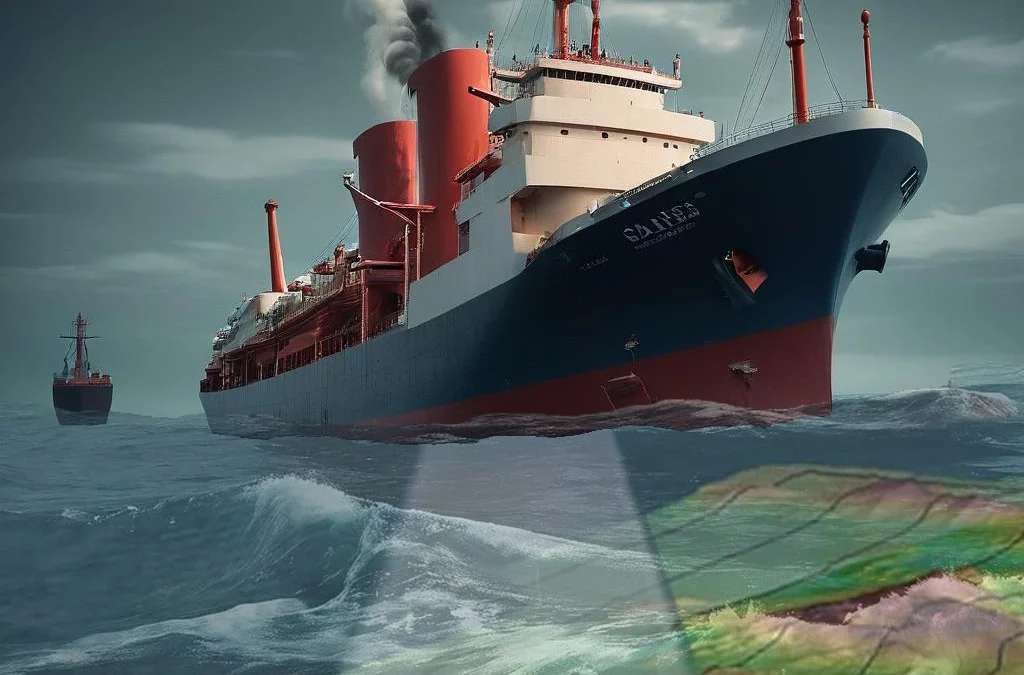
Navigating the Depths: Understanding Sonar Systems for Commercial Fishing and Navigation
Importance of Sonar in Fishing/Navigation
In the realm of modern commercial fishing and navigation, sonar systems are the unsung heroes, revealing the mysteries of the deep and guiding vessels safely through the waters. This blog post delves into the significance of sonar, exploring how it revolutionizes both fishing practices and navigation strategies.How Sonar Systems Work: Sound Waves, Echoes
Harnessing Sound WavesSonar, short for Sound Navigation and Ranging, relies on the basic principles of sound waves. A transducer emits sound pulses into the water, creating waves that travel through the medium. Echoes Unveiling the Depths
When these sound waves encounter objects underwater, they bounce back as echoes. The sonar system detects these echoes, calculating the distance, depth, and shape of the objects, offering a comprehensive view of the underwater environment.
Types of Sonar Systems: Single Beam, Multibeam
Single Beam SonarIdeal for shallow waters, single beam sonar systems emit a single sound wave, providing a straightforward depth reading directly below the vessel. They are efficient for basic navigation and depth profiling. Multibeam Sonar
In contrast, multibeam sonar systems release a fan of sound waves, offering a broader and more detailed view of the underwater landscape. Widely used in commercial fishing and deep-sea navigation, these systems provide a comprehensive understanding of the underwater topography.
Applications in Commercial Fishing: Finding Fish, Monitoring Seabed
FishfindersSonar, commonly known as a fishfinder in the fishing world, plays a pivotal role in locating fish schools beneath the vessel. Commercial fishermen leverage this technology to identify optimal fishing spots, maximizing their catch efficiency. Monitoring Seabed
Sonar assists in monitoring the seabed, revealing underwater structures and composition. This information aids fishermen in avoiding obstacles, ensuring the safety of both the vessel and the equipment.
Role in Navigation: Mapping Underwater Terrain, Avoiding Obstacles
Ship Echo SounderFor navigation purposes, sonar takes the form of a ship echo sounder. It maps the underwater terrain, helping vessels navigate safely by identifying submerged hazards and charting the topography. Avoiding Obstacles
Sonar’s real-time data enables vessels to avoid obstacles, ranging from underwater rocks to sunken vessels. This collision avoidance capability is vital for the safety of both the vessel and the crew.
Benefits and Limitations: Improved Efficiency, Depth Limitations
Improved EfficiencySonar systems enhance efficiency in both fishing and navigation operations. Fishermen can precisely target fishing areas, while navigators can confidently traverse unfamiliar waters with accurate depth information. Depth Limitations
However, it’s essential to acknowledge the limitations of sonar, particularly regarding depth. While effective in shallower waters, sonar encounters challenges in extreme depths, where other technologies may be required.
